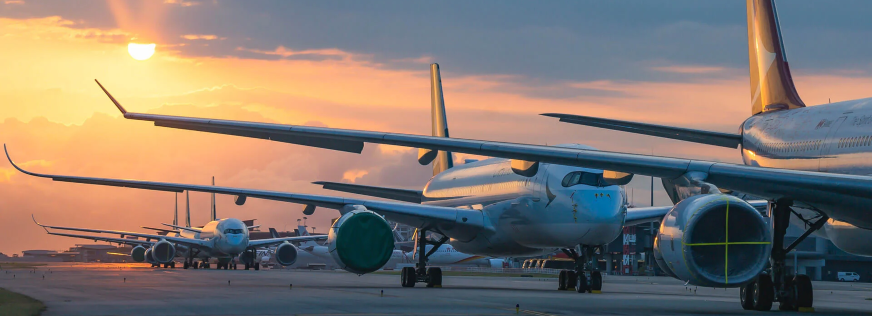TO MOST PEOPLE, THE SKY IS THE LIMIT - TO THOSE WHO LOVE AVIATION, THE SKY IS HOME
TO MOST PEOPLE, THE SKY IS THE LIMIT - TO THOSE WHO LOVE AVIATION, THE SKY IS HOME

The aviation industry has always been at the forefront of technological developments, constantly pushing the boundaries of what is possible. As we enter a new era, we witness an exciting array of innovations that promise to revolutionize how we fly. In this blog post, we will dive into some of the most promising technologies shaping the future of aviation.
One of the most critical developments in aviation is the appearance of electric airplanes. With advances in battery technology, electric aircraft are becoming a viable alternative to conventional fossil fuel-powered aircraft. Electric aircraft offers many benefits, including lower carbon emissions, lower operating costs, and quieter flights. Major manufacturers and startups are investing in electric flight, with prototypes and commercial models being tested and developed worldwide.
Supersonic travel, which seemed like a relic of the past with the retirement of the Concorde, is making a comeback. Many companies are working on supersonic passenger planes that promise to reduce travel times significantly. These next-generation supersonic plans are intended to address the challenges that have plagued the Concorde, such as high fuel consumption and sonic booms. Using advanced aerodynamics and more efficient engines, these planes could allow us to fly faster than ever.
Independent flight is no longer limited to science fiction. The aviation industry is actively exploring drones' possibilities for cargo and passenger travel. Autonomous flight plans can improve safety, routing, and efficiency. However, integrating autonomous aircraft into our airspace comes with its own challenges, including regulatory frameworks, cybersecurity concerns, and public acceptance.
The concept of Urban Air Mobility (UAM) aims to revolutionize transport within cities. Electric vertical takeoff and landing (eVTOL) aircraft, also known as flying taxis, are being developed to provide on-demand air transportation to urban dwellers. UAM can alleviate traffic congestion, reduce travel times, and improve connectivity in urban areas. With many companies prototyping and testing eVTOL, we may soon witness a new era of urban transportation.
Addressing climate change is a top priority for the aviation industry. Sustainable Aviation Fuel (SAF) provides a greener alternative to conventional jet fuel. These fuels are produced from renewable sources, such as plant feedstocks or waste materials, and have the potential to reduce greenhouse gas emissions significantly. Several airlines have already begun integrating SAF into their operations, and efforts are underway to increase production and reduce costs.
The future of aviation is tremendously bright as we embrace innovative technologies and sustainable practices. Electric aircraft, supersonic travel, autonomous flight, urban air mobility, and sustainable aviation fuels are some innovative developments shaping the industry. While there are challenges to overcome, the aviation industry's commitment to innovation and sustainability ensures that we are on the path to a more efficient, environmentally friendly, and accessible future of aviation. As travelers and aviation enthusiasts, we can look forward to an exciting era of transformative changes in the skies.

Stay connected with our aviation and blogs on aviation. Subscribe to AR Air Group, for every update in the industry.
Post A Comment